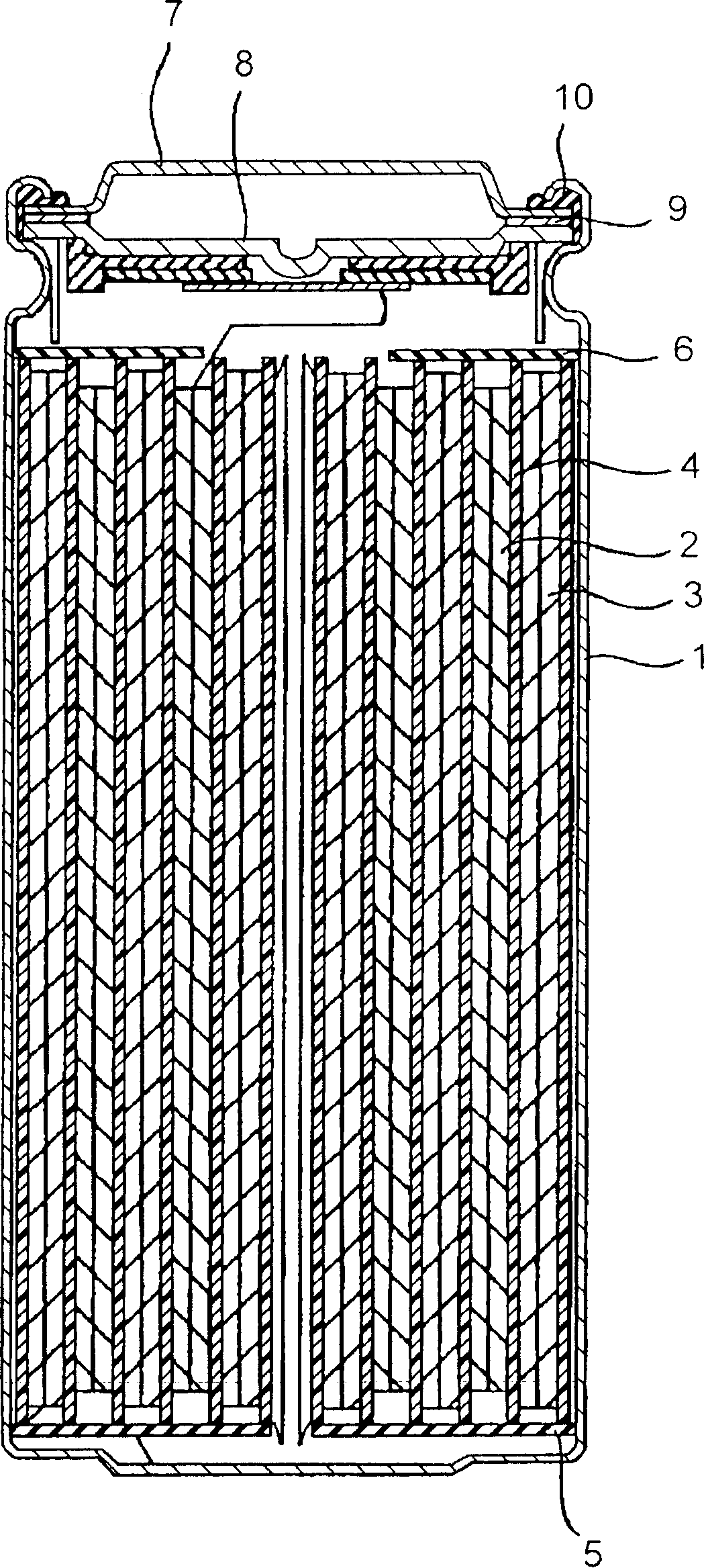Positive electrode active material and non-aqueous electrolyte secondary cell
A positive electrode active material, anhydrous electrolyte technology, applied in non-aqueous electrolyte storage batteries, secondary batteries, active material electrodes, etc., can solve the problems of not being able to fully improve performance, difficult to improve operational performance and discharge performance at the same time, and achieve improved performance. High-temperature operation performance and high-current discharge performance, compensating for the decrease in ionic conductivity and electronic conductivity, and suppressing the effect of electrolyte decomposition
- Summary
- Abstract
- Description
- Claims
- Application Information
AI Technical Summary
Problems solved by technology
Method used
Image
Examples
Embodiment 1
[0067] (first lithium transition metal composite oxide)
[0068] An aqueous solution containing Ni to Mn in a molar ratio of 0.75 and 0.25, respectively, formed by using commercially available nickel nitrate and manganese nitrate is dropped to an aqueous ammonium solution (aqueous ammonium solution) while sufficiently stirring, thereby forming a composite hydroxide . This composite hydroxide was mixed with lithium hydroxide and sintered at 850° C. for 10 hours under oxygen flow, followed by pulverization, thereby forming a powdery lithium-nickel-manganese composite oxide, which was the first lithium transition metal composite oxide .
[0069] In addition, when the obtained first lithium transition metal composite oxide was analyzed by atomic absorption spectroscopy, the identified components consisted of LiNi 0.75 mn 0.25 o 2 express. Also, when the particle diameter was measured using a laser diffraction method, the average particle diameter was 12 micrometers. In addit...
Embodiment 2
[0090] A nonaqueous electrolyte secondary battery was formed in the same manner as in Example 1, except that the first composite oxide and the second composite oxide were mixed together thereby obtaining a weight ratio of A / B of 80 / 20, as in Example 1 In the case of , measure the cycle retention rate at 50°C and the retention rate under high current discharge.
Embodiment 3
[0092] A nonaqueous electrolyte secondary battery was formed in the same manner as in Example 1, except that the first composite oxide and the second composite oxide were mixed together thereby obtaining a weight ratio of A / B of 30 / 70, as in Example 1 In the case of , measure the cycle retention rate at 50°C and the retention rate under high current discharge.
PUM
| Property | Measurement | Unit |
|---|---|---|
| diameter | aaaaa | aaaaa |
| diameter | aaaaa | aaaaa |
| diameter | aaaaa | aaaaa |
Abstract
Description
Claims
Application Information
 Login to View More
Login to View More - R&D
- Intellectual Property
- Life Sciences
- Materials
- Tech Scout
- Unparalleled Data Quality
- Higher Quality Content
- 60% Fewer Hallucinations
Browse by: Latest US Patents, China's latest patents, Technical Efficacy Thesaurus, Application Domain, Technology Topic, Popular Technical Reports.
© 2025 PatSnap. All rights reserved.Legal|Privacy policy|Modern Slavery Act Transparency Statement|Sitemap|About US| Contact US: help@patsnap.com

